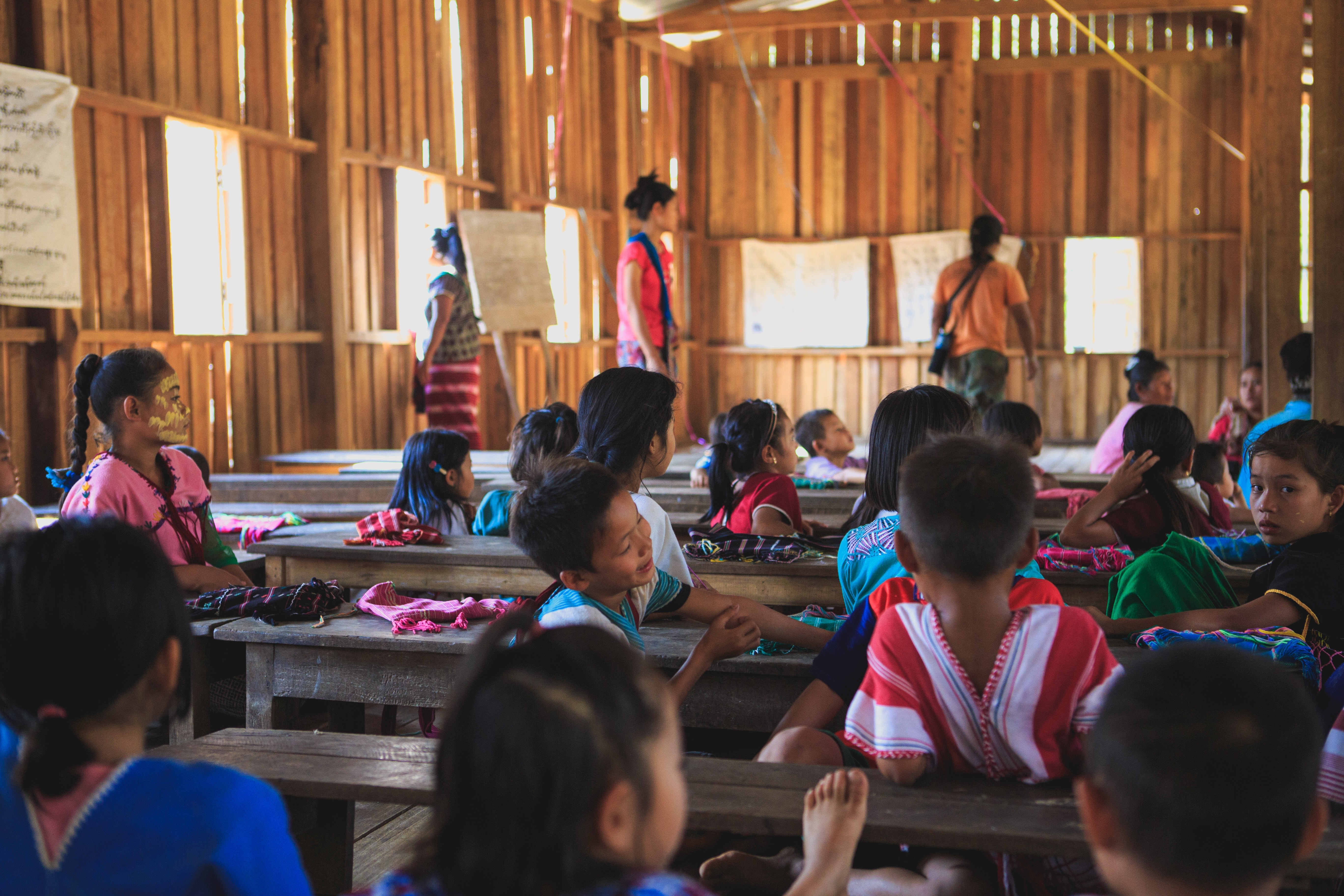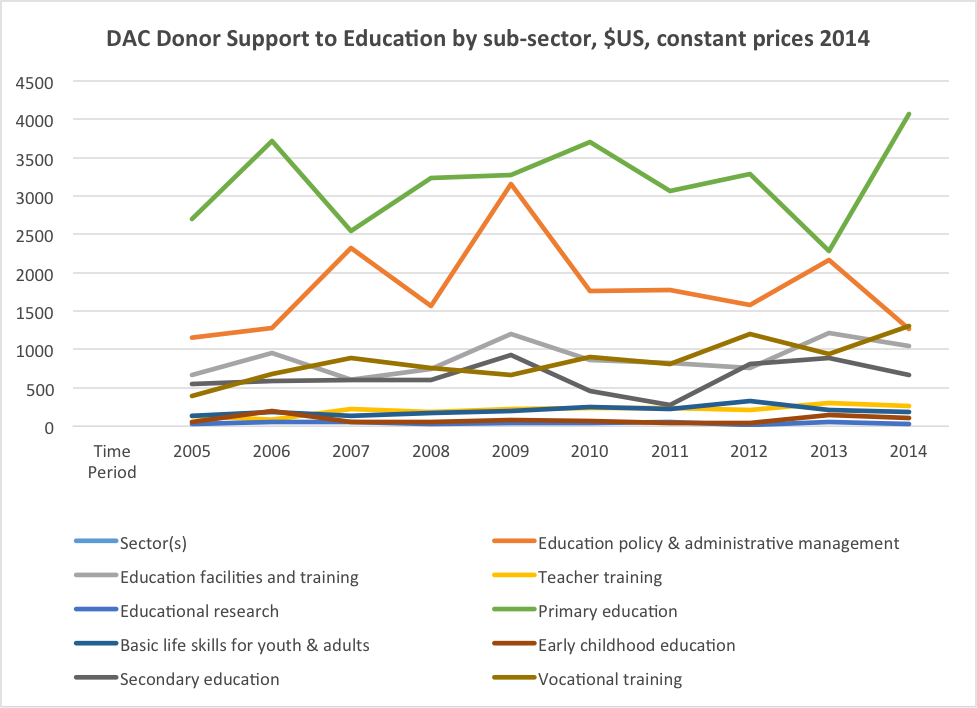
by Robert Sauder
Published: July 18, 2017
- Increased access to education has meant larger and more diverse classes for teachers to manage. In many cases, the student body now includes students with more negative factors for learning, such as family poverty, gender bias, weak community support or learning deficits. Teachers need more training and support than before.
- Teacher training needs more attention from national governments and donors. Access gains, especially for girls, need to continue, but should be accompanied by significant investments in teacher development. Teacher development will yield significant gains in terms of student learning.
- Investments in education require a strategic and balanced approach to key elements of the education system. Student-centred teaching practices show the greatest potential impact in constrained and under-funded education systems.
Despite the widespread belief that education is fundamentally important to development, the poor quality of education in the developing world threatens to seriously diminish those development benefits. The increase in access to education has come at a high cost for quality. Improved access has meant, among other changes, increased class sizes and reduced system resources. There are many ways to improve educational quality, ranging from more and better facilities, better textbooks, greater use of technology, greater parental involvement, more extracurricular activities, and curricular reform. In the face of highly constrained resources, improved teaching has the greatest potential to influence quality.
Teacher Training has a Big Impact on Learning Outcomes
Teacher training is among the most impactful interventions on learning outcomes and pivotal for improved quality overall, especially when combined with other school reforms such as enhanced monitoring and support. The best school systems have several components in common: the quality of teachers, teacher training and instructional systems. In Mexico, a teacher in a poor area was able to bring his class into the 99th percentile on national math tests by using innovative pedagogy. At a poor rural school in South Africa, a similarly impressive result of a 100% matric pass rate was obtained as a result of inspired teaching. There have been cases that show impressive improvements in student learning despite the challenges of poverty faced by the students’ families. Unfortunately, these ‘miracle’ cases tend to be the exception.
Old Style Teacher-Centric Systems Don’t Work
Dominant teaching practices in developing countries have their origins in colonial education systems. These teacher-centric models positioned the teacher as the source of knowledge. Rote learning and repetition dominated with little feedback during the term before exams, which often represented 100% of the final grade. Many of the colonial systems were designed to weed out all but the most elite students. There was an emphasis on mastery of content and performance in the colonial languages, such as English, Portuguese, or French. This approach naturally favoured students with socio-economic advantages. The inequitable school success rates across the developing world are at least partly a legacy of the old colonial system. Ironically, some efforts to improve learning outcomes, such as the provision of more textbooks, have been shown to mostly help elite students.
The persistence of the old teaching model is problematic. A wide-ranging study of sub-Saharan pedagogy noted that the tendency to use teacher-centred models is driven by a variety of factors, including lack of training and mentors, little personal experience, and an exam-driven system of education. Poorly educated and trained teachers are often unable to overcome the learning obstacles of non-mother tongue instruction, large classes, and low-quality textbooks.
Student-centric Approaches Yield High Value
Student-centric teaching models have been shown to have more positive impacts on learning outcomes. For example, in Ethiopia, the reform of teacher training has been associated with improved learning outcomes and other school reform efforts. Countries like Kenya that have recognized learner-centred teaching can face a relapse to old style pedagogy because of lack of training and personal experience. Student-centered learning can help socio-economically disadvantaged groups achieve better learning outcomes.
On the value of teacher training, John Hattie’s meta-analysis of hundreds of studies on student achievement has consistently put teaching strategies among the top group of factors. Even simple pedagogical reforms, such as guided reading and a ‘word wall’ system, can have dramatic effects. An extensive review of the evidence on effective teaching practices found that the “key difference is that the most effective teachers [pay] attention to their students […] placing them centrally in their construction of the teaching-learning process.”
Poor Teacher Training Forms a Vicious Cycle
Teachers face other challenges besides poor training. Teachers in sub-Saharan Africa face employment insecurity, poor wages, gender disparities, poor or absent equipment and texts, and low levels of satisfaction. Without doubt, increased class sizes that have come with improved education access have worsened the situation. Teacher absenteeism is a significant problem in many countries. A systematic review of teacher absenteeism showed that it is possible to use incentives and monitoring to improve attendance. Notably, greater teacher attendance without pedagogical improvements shows little effect on student achievement. A study in Ghana about school quality found that teacher commitment and dedication were key factors for student success. Commitment and dedication may be qualities intrinsic to individuals, but being reasonably paid and trained will no doubt help.
A decline in teacher compensation is associated with a decline in educational quality. Unfortunately, there is a trend in developing contexts towards using less qualified and less expensive teachers as opposed to well-trained ones. Among other negative dynamics, better applicants seek better-paid careers elsewhere. A study in Ethiopia showed that teacher motivation and training is a critical element for producing quality education in very poor rural schools, which face multiple challenges. An analysis of poor quality of teaching in Latin America recommends an assertive and ambitious approach to teacher training, emphasizing high entry standards, practical and theoretical training, regulation of teacher training institutions, and a results-oriented learning outcomes.
Donor Support for Teacher-Training Support is Relatively Weak
Compared to other education priorities, the level of DAC donor support over the last decade to teacher training has been flat. Funding for education policy and management, which is important for the effective deployment of teachers, is declining. Primary education has consistently been a top priority and support appears to be increasing recently. This may help to explain the improvements in access and enrolment seen in many developing countries. Perhaps not surprisingly, there is a looming shortage of teachers in the most populous countries in the world. Even before the advent of the SDGs, the goal of universal primary education (UPE) was severely handicapped by the lack of trained teachers.



Recent Comments